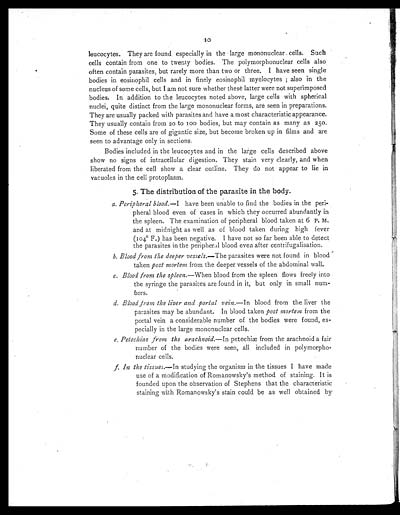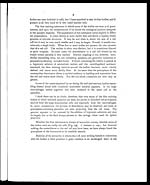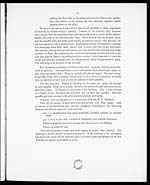Medicine - Institutions > Army health reports and medical documents > Scientific memoirs by officers of the Medical and Sanitary Departments of the Government of India > Number 8 - Preliminary report on a parasite found in persons suffering from enlargement of the spleen in India > Preliminary report on a parasite found in persons suffering from enlargement of the spleen in India
(18) Page 10
Download files
Individual page:
Thumbnail gallery: Grid view | List view

10
leucocytes. They are found especially in the large mononuclear cells. Such
cells contain from one to twenty bodies. The polymorphonuclear cells also
often contain parasites, but rarely more than two or three. I have seen single
bodies in eosinophil cells and in finely eosinophil myelocytes; also in the
nucleus of some cells, but I am not sure whether these latter were not superimposed
bodies. In addition to the leucocytes noted above, large cells with spherical
nuclei, quite distinct from the large mononuclear forms, are seen in preparations.
They are usually packed with parasites and have a most characteristic appearance.
They usually contain from 20 to 100 bodies, but may contain as many as 250.
Some of these cells are of gigantic size, but become broken up in films and are
seen to advantage only in sections.
Bodies included in the leucocytes and in the large cells described above
show no signs of intracellular digestion. They stain very clearly, and when
liberated from the cell show a clear outline. They do not appear to lie in
vacuoles in the cell protoplasm.
5. The distribution of the parasite in the body.
a. Peripheral blood.—I have been unable to find the bodies in the peri-
pheral blood even of cases in which they occurred abundantly in
the spleen. The examination of peripheral blood taken at 6 P. M.
and at midnight as well as of blood taken during high fever
(104° F.) has been negative. I have not so far been able to detect
the parasites in the peripheral blood even after centrifugalisation.
b. Blood from the deeper vessels.—The parasites were not found in blood
taken post mortem from the deeper vessels of the abdominal wall.
c. Blood from the spleen.—When blood from the spleen flows freely into
the syringe the parasites are found in it, but only, in small num-
bers.
d. Blood from the liver and portal vein.—In blood from the liver the
parasites may be abundant. In blood taken post mortem from the
portal vein a considerable number of the bodies were found, es-
pecially in the large mononuclear cells.
e. Petechiae from the arachnoid.—In petechæ from the arachnoid a fair
number of the bodies were seen, all included in poymorpho-
nuclear cells.
f. In the tissues.—In studying the organism in the tissues I have made
use of a modification of Romanowsky's method of staining. It is
founded upon the observation of Stephens that the characteristic
staining with Romanowsky's stain could be as well obtained by
Set display mode to: Large image | Zoom image | Transcription
Images and transcriptions on this page, including medium image downloads, may be used under the Creative Commons Attribution 4.0 International Licence unless otherwise stated. ![]()
| Permanent URL | https://digital.nls.uk/75026125 |
|---|
| Shelfmark | IP/QB.10 |
|---|---|
| Additional NLS resources: | |




